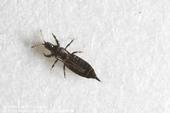
The myporum thrips is a tiny, recently-arrived insect, native to New Zealand, that has been devastating two species of myoporum (Myoporum laetum and M. pacificum) widely planted in California landscapes. These species have been popular because of their visual appeal and low maintenance and water requirements. Feeding by the thrips severely distorts new leaves and terminals, making plants unsightly.
This pest is very difficult to manage, although systemic insecticides can provide some control. Many gardeners may choose to replant with non-susceptible plant species. Read more about biology and management of this pest in the new UC IPM Pest Note:...
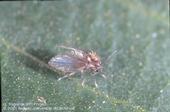
Drain flies, also called moth flies, are small flies that develop in decaying organic matter in sink or sewer drains. Their wings are covered with fine hairs, giving them a moth-like appearance. When many adults emerge at the same time, they can become a nuisance in homes or a health concern in commercial kitchens, processing plants or health care facilities. Regular inspection of drains and elimination of breeding sites are essential for keeping drain flies under control.
Read more about biology and management about these pests in a new UC IPM Pest Note: Moth and Drain Flies by David Theuret and Alec Gerry, Entomology, UC Riverside.
- Author: Karrie Reid
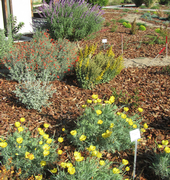
[From March 2014 issue of the Retail Nursery and Garden Center IPM News.]
Anything used to cover the surface of the soil in a landscape or garden is called mulch. Most retail nurseries and garden centers sell a variety of mulch products in smaller bagged quantities or rolls. Mulch may be inorganic, like rock or chipped rubber; organic, such as straw, shredded leaves, chipped wood or bark; or synthetic landscape fabric. Mulch is often confused with compost; but while compost may be used as mulch, its primary use is as a soil amendment. Generally, larger-sized organic materials used...
- Author: Andrew M. Sutherland
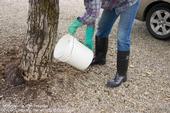
[From March 2014 issue of the Retail Nursery and Garden Center IPM News.]
A massive killing of bumblebees in Oregon, concerns about impacts on honey bees, and tight new regulations imposed by the European Union have kept neonicotinoid insecticides in the news. The neonicotinoid group includes imidacloprid, one of the most popular garden insecticides sold in stores.
First developed in the late 1980s, neonicotinoids represented the first new class of insecticides in over 50 years. They are insect nervous system toxins widely used in horticulture, agriculture, and structural...
- Author: Mary Louise Flint
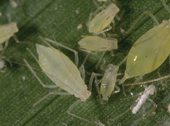
[From March 2014 issue of the Retail Nursery and Garden Center IPM News.]
Oils are often the best pesticide choice for controlling soft-bodied insects and mites, as well as several foliar diseases including powdery mildew in the garden and landscape (Table 1). They can be safely used on both woody and herbaceous plants. Not only do oils leave no toxic residues, they are safe to use around people, pets, and wildlife; have low impact on beneficial insects; and won't harm honey bees unless applied directly to flowers during the time of day that...


